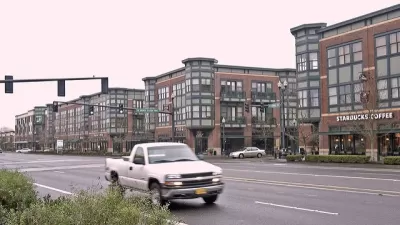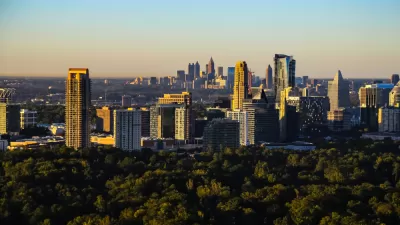The island nation is mandating mid-density zoning requirements and transit-oriented development in an effort to increase housing affordability and encourage compact development.

Responding to the rise in housing costs that has affected even remote corners of the world, New Zealand recently passed "sweeping zoning reform legislation" that encourages mid-density housing development. As Ryan Greenaway-McGrevy writes, these reforms provide some valuable lessons for other countries.
For decades, New Zealand's housing policy essentially omitted middle-density, multi-unit housing types like rowhouses or mid-rise apartment buildings, favoring single-family homes and high-rise apartment buildings in limited urban areas. But now, with significant population growth raising demand for the country's limited housing, lawmakers from across the political spectrum are seeking ways to slow the growth of housing costs. In addition to the new Medium Density Residential Standard, policies include "a capital gains tax targeted at housing speculation, a ban on foreign investment in residential housing, fast-tracked inclusive housing developments, and state-subsidized housing development projects." In 2020, as part of its National Policy Statement on Urban Development, the government mandated higher-density development near transit lines.
Kiwis saw success with upzoning policies in Auckland, where the city's Auckland Unitary Plan (AUP) led to a sharp increase in permits for attached housing and more development in the city's inner suburbs. But although New Zealand's policy experiments show promising results in stimulating construction, it remains to be seen whether increased affordability will follow suit, and how long it will take for supply to meet demand.
FULL STORY: New Zealand’s bipartisan housing reforms offer a model to other countries

Alabama: Trump Terminates Settlements for Black Communities Harmed By Raw Sewage
Trump deemed the landmark civil rights agreement “illegal DEI and environmental justice policy.”

Planetizen Federal Action Tracker
A weekly monitor of how Trump’s orders and actions are impacting planners and planning in America.

The 120 Year Old Tiny Home Villages That Sheltered San Francisco’s Earthquake Refugees
More than a century ago, San Francisco mobilized to house thousands of residents displaced by the 1906 earthquake. Could their strategy offer a model for the present?

LA’s Tree Emergency Goes Beyond Vandalism
After a vandal destroyed dozens of downtown LA trees, Mayor Karen Bass vowed to replace them. Days later, she slashed the city’s tree budget.

Sacramento Leads Nation With Bus-Mounted Bike Lane Enforcement Cameras
The city is the first to use its bus-mounted traffic enforcement system to cite drivers who park or drive in bike lanes.

Seattle Voters Approve Social Housing Referendum
Voters approved a corporate tax to fund the city’s housing authority despite an opposition campaign funded by Amazon and Microsoft.
Urban Design for Planners 1: Software Tools
This six-course series explores essential urban design concepts using open source software and equips planners with the tools they need to participate fully in the urban design process.
Planning for Universal Design
Learn the tools for implementing Universal Design in planning regulations.
Ada County Highway District
Clanton & Associates, Inc.
Jessamine County Fiscal Court
Institute for Housing and Urban Development Studies (IHS)
City of Grandview
Harvard GSD Executive Education
Toledo-Lucas County Plan Commissions
Salt Lake City
NYU Wagner Graduate School of Public Service





























